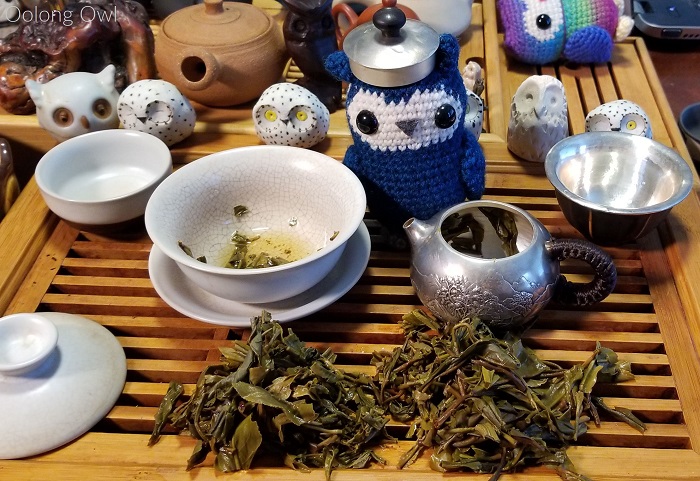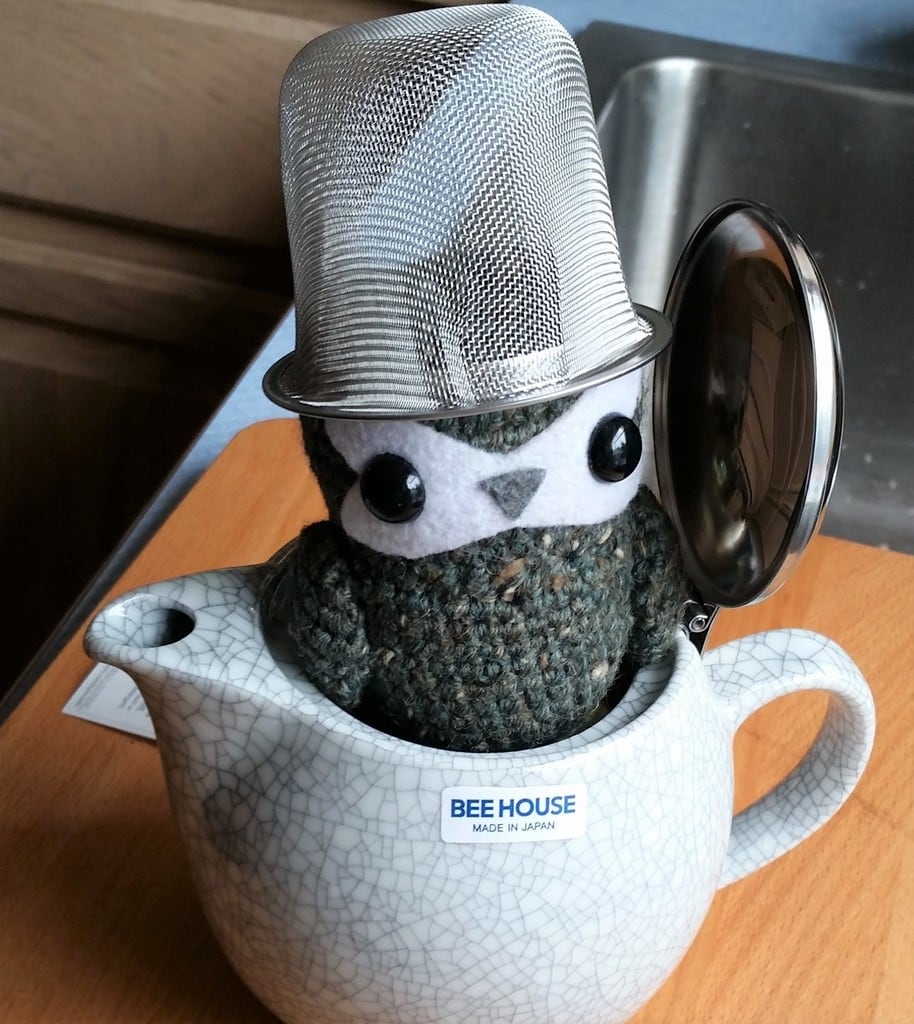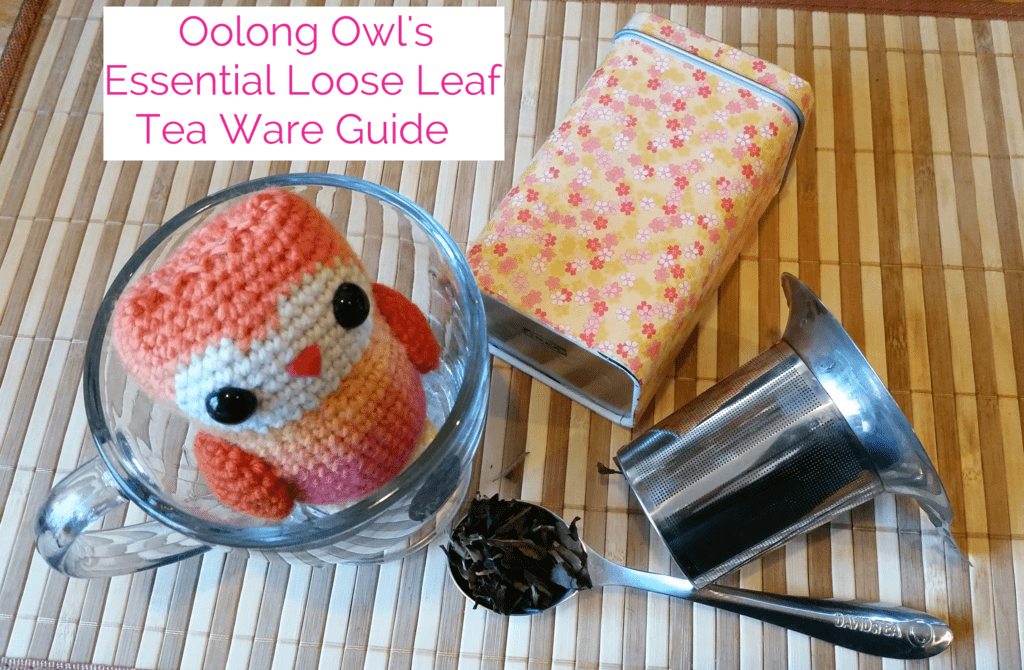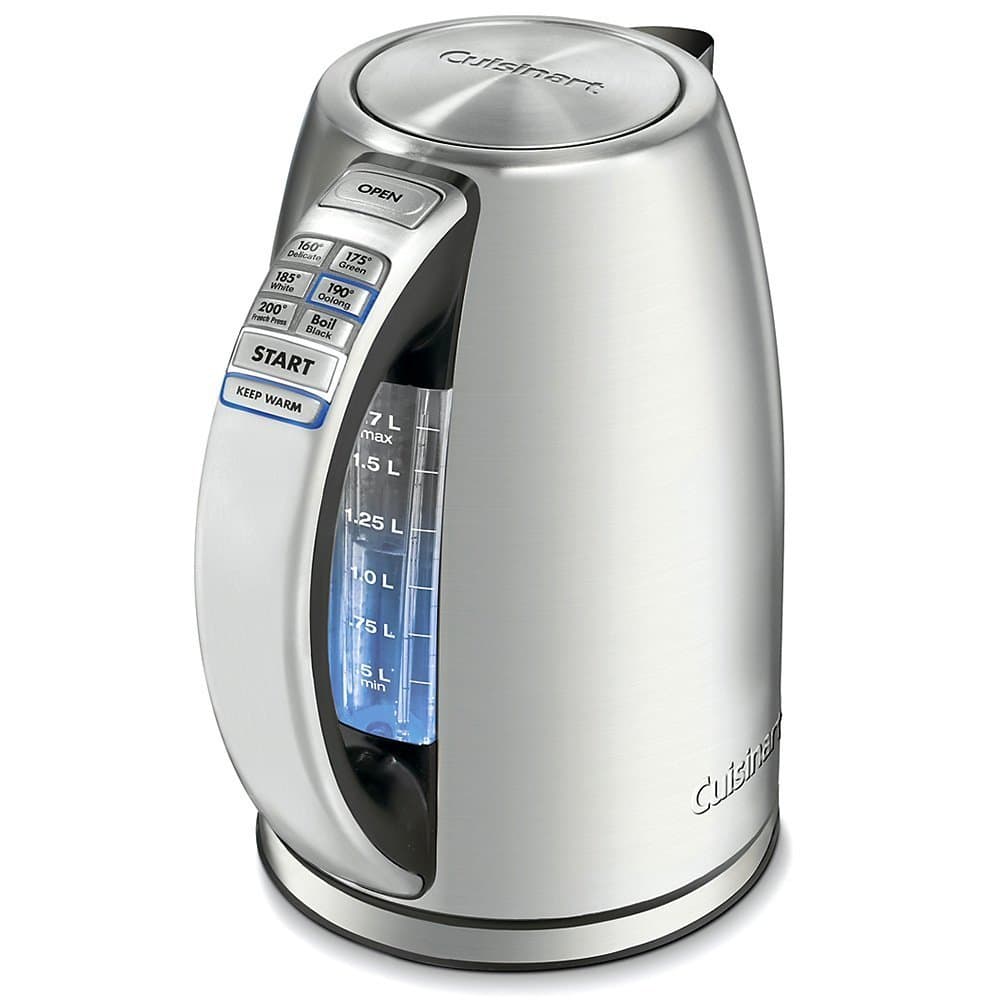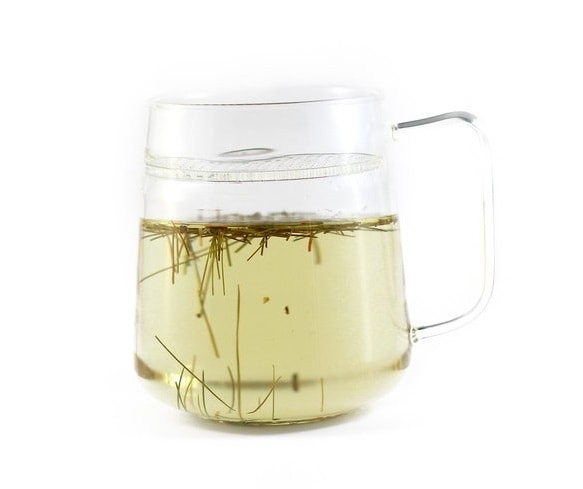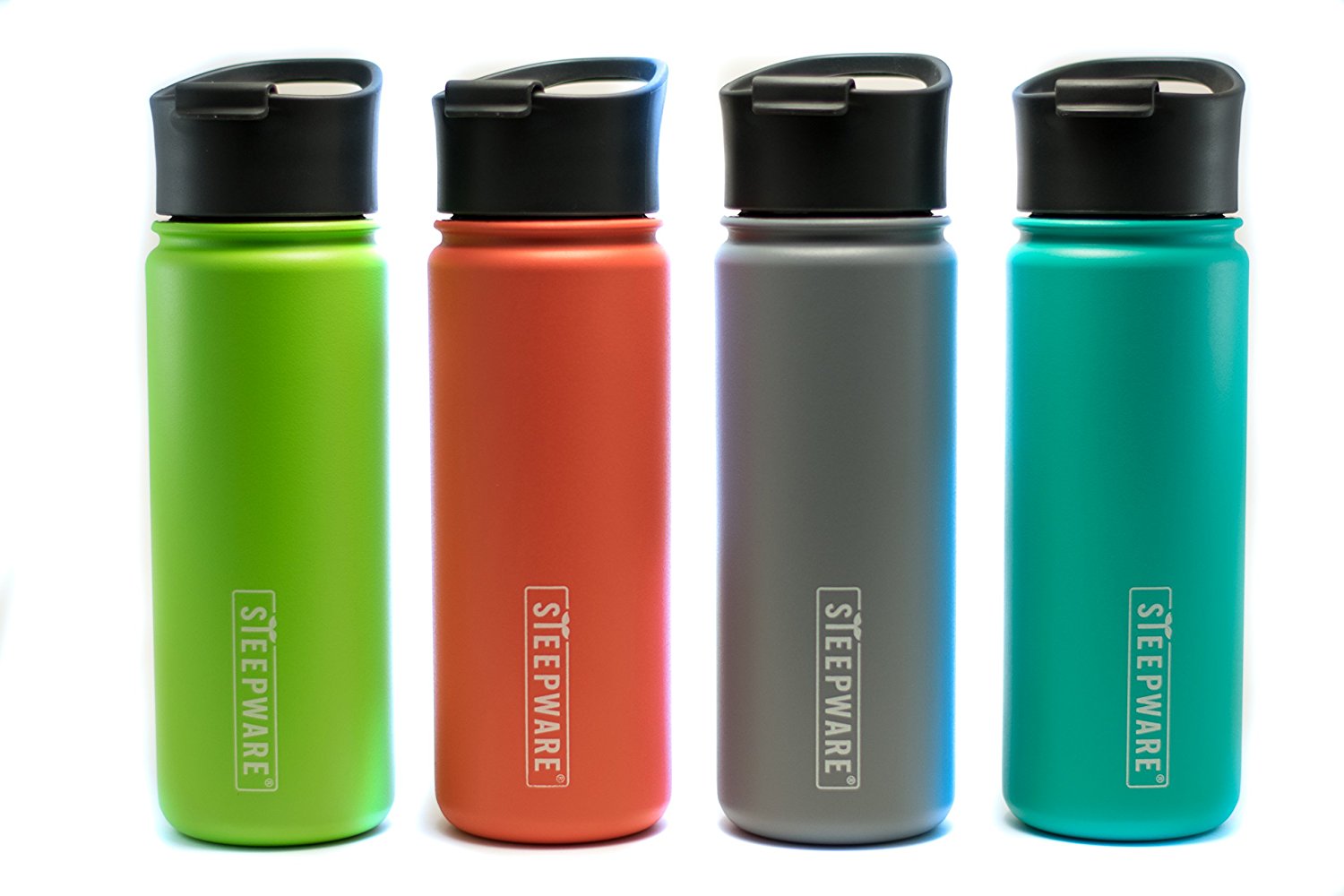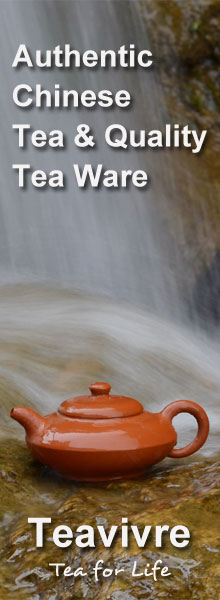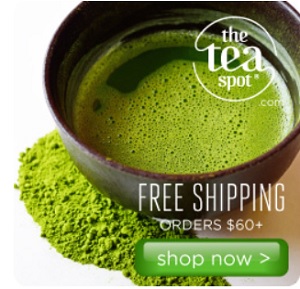From my previous experiments, I found silver teaware produces an effect to change the taste of tea, especially with sheng, black, and funky teas. Silver cuts down the bitterness and other harsh elements such as over roasting, funky storage. The effect also works with silver-lined teacups.
Silver teapots are expensive, usually at least $300, but a silver teacup is priced around $50 (sometimes as low as $20). That said, we are going to compare a silver pot to a silver cup and why not mix it up with silver on silver action too.
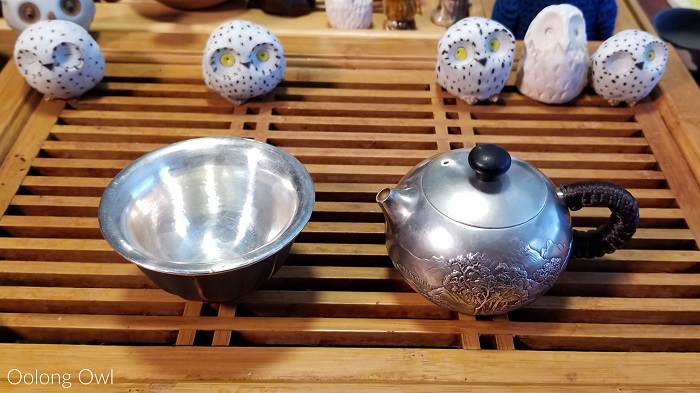
Comparison Tasting Method
I am using a similar sized silver teapot and ruyao glazed gaiwan. To compare, I have a silver teacup and a ruyao teacup. To be less confusing, I’ll be calling the ruyao the “regular” teaware. The tester tea is my old cake of White2Tea’s 2016 Daily Drinker. It is an inexpensive $20 (though currently priced at $28 due to age) 200 gram cake.
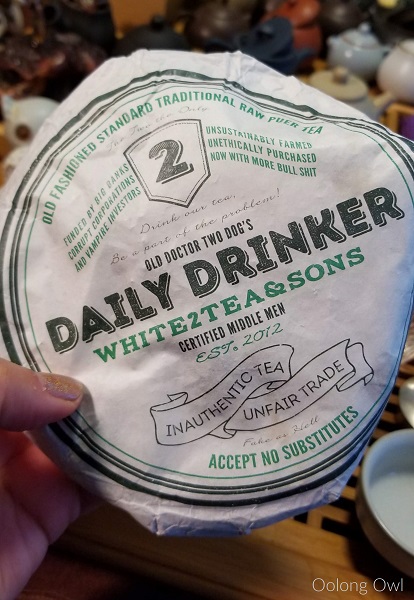
I used 1 gram of leaf per 15ml of vessel size gongfu style ratio, steeping at a boil. I tried to time the pour on the gaiwan to account for the slower pour of the silver pot. Tea was placed into a pitcher so I was drinking the same infusion in different cups.
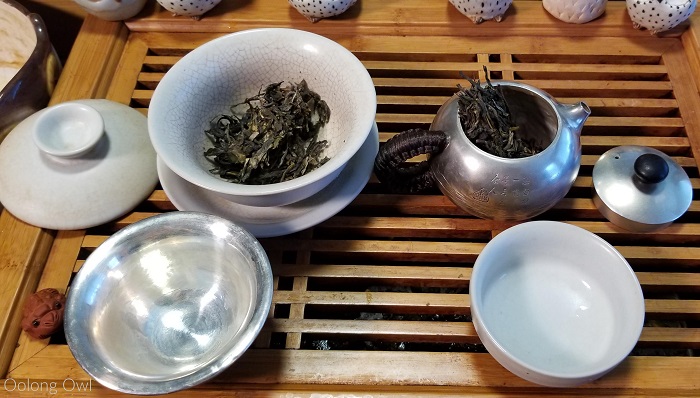
Comparing Silver Teapot to Silver Teacup and Regular Teaware
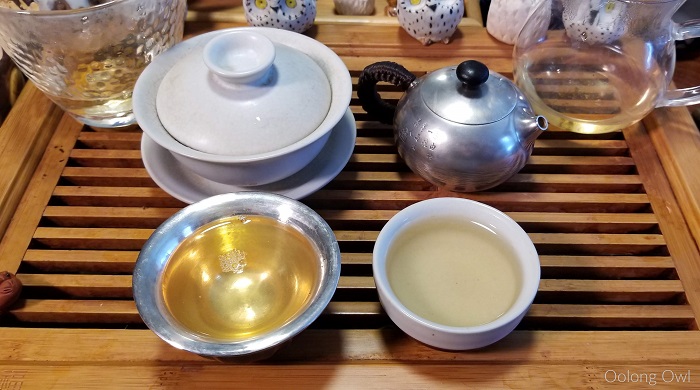
Silver Teapot + Regular Cup
Immediately, I noticed this is a clean, bright, and peachy tasting sheng. Daily Drinker is brightly flavored and leans the sweetest out of the experiment. This tea had something amazing happen in the background and I’m not in on the secret. I forgot I’m drinking a cheap sheng here, it was a good tea. I’d almost say it increased it from a $20 tea to a $50 tea.
Regular Gaiwan + Silver Teacup
The silver tea effects aren’t as pronounced compared to the silver teapot + regular cup as it is a bit more bitter and drier in comparison. The flavor got a bit more peachy tasting a few infusions in, unlike the silver pot which happened right away. However, the tea is noticeably brighter, less bitter, and stronger notes than double regular teaware, making it more pleasing to drink.
The silver teacup adds a slightly more metallic note. Though I am having a hard time separating whether it is a legitimate metallic taste or having the feel of silver against my lips and my brain is filling in “this is metal”.
Double Regular Teaware
Removing silver from our tea tasting made the driest and most bitter tasting tea. Our Daily Drinker started low on flavor but also bitter. Later infusions got a little fruity, but mostly stewy tasting. I am actively aware this tea is a cheap $20 tea.
Double Silver Teaware
Wow, this is drinking liquid sunshine! Strangely, the sheng isn’t peachy like the other combinations but is bright, vibrant and clean tea. It is like the silver teapot and teacup scrubbed and polished the tea to Mr. Clean’s blinding shiny forehead levels and left it a clinically clean experience. Instead of fruity, the tea tastes of glass and minerals. There are little stewy notes, but it did get a bit metallic, similar to silver cup tasting, even in the final infusions when the tea should be a bitter mess.
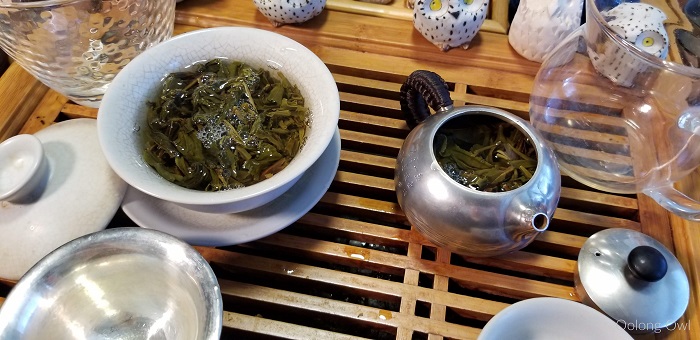
Comments
If you are using a silver teapot to evaluate or review a tea it is cheating. Silver teaware heavily influences the tea, reducing bitterness in particular. Using regular teaware easily shows the weakness and baseline flavor of the tea.
My guess is the longer interaction and actual tea infusion was more influenced when steeped in silver, which made the most pleasing result. I liked the balance of silver brightness and the minimization of bitterness. Double silver teaware seemed overkill as I wasn’t actually tasting the tea, I was tasting some sort of luxury abomination scrubbed of emotion. It was a tasty tea session, don’t get me wrong, but it wasn’t the same tea anymore.
The silver teacup does a smaller interaction but also added a more metallic note as your face is in it. I got a good result, but it wasn’t as strong as using a silver teapot with a regular cup. It does demonstrate silver does things, so it is a nice piece of teaware to have. Realistically, a $50 teacup does a fine job, as I wouldn’t call a $300 silver teapot adding 6 times the effect.
